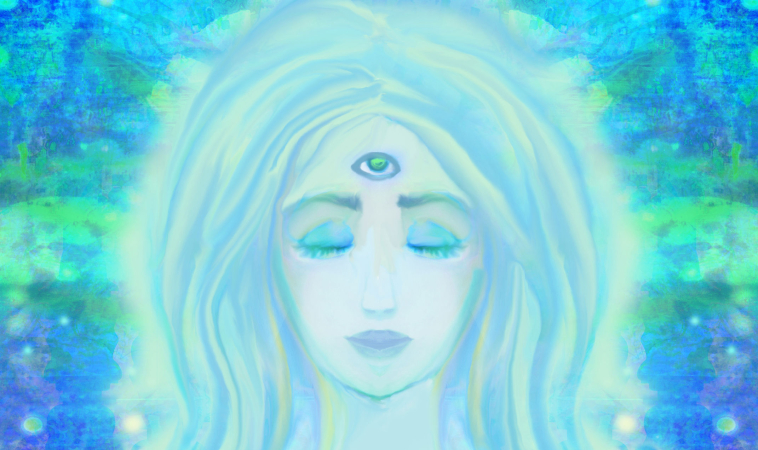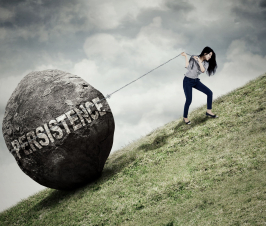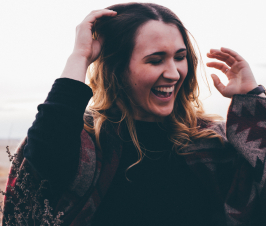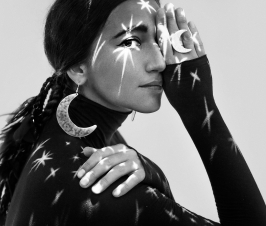Robyn M Fritz MA MBA
We lost our ability to use our intuition
Somewhere on our oh-so-human march towards progress we lost our ability to use our intuition. It became something “woo-wooey” that couldn’t be explained scientifically. What we forgot is that is exactly the point of intuition: as intuitive Laura Day says, it’s “nonlinear and nonempirical,” which doesn’t fit what we’ve come to accept as good science or smart living.
Our tendency, then, is to dismiss it. In truth, we’re all intuitive, and failing to use our intuition affects both our personal and our professional lives.
When I teach intuition, I like to relax my students by starting with a favorite joke: there were once two branches of the human race—one was intuitive, and the other got eaten. So relax, you’re a survivor, descended from survivors. And learning to use your intuition can keep you that way while helping you create a more graceful, vibrant, successful life. And we all need that!
One problem with learning to use our intuition is expectations. It’s not solely the province of professional psychics or the occasional random “hit” that proves true. Your intuition is a real sense, just like the other five: hearing, seeing, touching, tasting, and smelling. It’s a skill you can learn, but it’s more complex than your other senses because it’s a combination of abilities.
Flavors of Intuition
Intuition comes in four main “flavors.” Clairvoyance is seeing things, from colors or auras around people, beings others can’t see (like the dead), or pictures that suddenly pop into their heads. Clairaudients hear things, from animals to other beings talking to them telepathically. Clairsentients are the feeling people, what many call empaths, who experience others’ feelings. Claircognizants are people who just “know” something that defies logic: the answer just pops in their head.
With intuition we become aware of something beyond what is in front of us. We get the information to solve a problem from a picture or voice in our head, a feeling we can’t justify, or we simply know it. It takes time to learn these separate skills, and it’s harder because our intuition actually combines these skills. It takes practice to learn how our specific intuitive ability works, so we can separate a real intuitive “hit” from, say, an upset stomach.
Listen to Your Own Intuition
Let me illustrate how intuition works with a dramatic true-life story.
Years ago my dad was ill and hospitalized for gall bladder surgery the next morning. When my mom called me, she told me not to bother coming: I lived four hours away. But when I hung up I was hit so hard by the strong sense that I had to be there that I was packed and on the road in thirty minutes. I didn’t stop for anything.
Literally five minutes after I walked into my dad’s hospital room, the surgeon walked in to chat about the surgery. He asked if my dad was allergic to anything, and my parents said “No.”
The same gut sense knowing (claircognizance) that pulled me out of my chair to get there hit me again. I blurted out, “Wait a minute, aren’t you allergic to that dye they use for X-rays?”
Startled, the doctor looked at me and then my parents. “Is that true?” he asked.
My parents stared at me in surprise and nodded, perplexed.
The doctor nodded at me and said, “I guess that’s why you’re here today. We would have used that dye before surgery tomorrow. You probably just saved your dad’s life.”
Dramatic, yes, and all before I really understood what intuition was, how to use it, and how to teach it. I saved my dad’s life because I listened to the nonlinear, this-doesn’t-make-sense-but-I-know-it’s-right feeling and acted on it. In fact, I reacted instantly, which was a good thing, because I literally only had that five minutes in the hospital room to act.
How do you learn to use your intuition?
Take a class, sure. But start with an exercise I use with all my students. I call it the “banana and orange” test, a simple, inexpensive way to play with your intuition. (And play is important: it helps us relax, which helps us more easily tap our intuition.)
First, get a notebook that you reserve just for your intuitive experiments.
Then go to the grocery store and stand in the fruit section of the produce aisle. No mystical mutterings here, just stand out of the way and make a few instant choices. What is the first fruit you’re drawn to, and want to eat? Let’s assume it’s a banana. What is the first fruit you’re not drawn to, and have no interest in eating? Let’s assume it’s an orange.
Pick one of each, take them home, and spend twenty or thirty minutes on the next part of the experiment.
Start with the banana, the fruit you liked. Explore it with all your senses: touch it, smell it, look at it, taste it. Then close your eyes and let your intuition go to work: what was it that attracted you to it? At this point, you may not know why, but you know something. That’s important. Record all your impressions, pro and con, including how it felt in your stomach and body to eat it. And what your intuition taught you about it. Was the banana good for your body or not? How do you know?
Do the same test with the orange, the fruit you didn’t like. Record all your impressions.
Over time examining your journal’s pros and cons about various things, including how your intuition responded to them, will help guide you in using your intuition in more serious matters, from buying a new piece of furniture for your home to getting additional information on a patient’s case.
It’s a start on learning, and using, your intuition.
 © 2016 Robyn M Fritz MA MBA
© 2016 Robyn M Fritz MA MBA
Robyn M Fritz MA MBA is an intuitive coach, author, and radio host. She offers animal communication, mediumship, soul progression clearing, and space clearing services internationally and teaches intuitive workshops. Upcoming classes on intuition and energy boundaries are at Bastyr University May 14-15, 2016. Her website:Alchemy West.

















